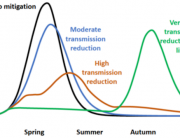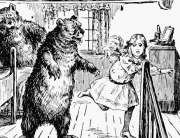How we say things can be as important as what we say. In this post, Ella Whiteley explores the “framing effect” and its implications for discussions of sex and gender.
Picture yourself in a fancy supermarket. There’s a food sample trolley down one aisle. You beeline towards it. (No one really grows out of the joy of getting a freebie.) There’s a sample of “facon” (vegetarian bacon) on offer, labelled “75% lean”. It tastes pretty good, and doesn’t feel like it’s immediately begun to clog your arteries, so you take a packet home. The thing is, you’d likely have responded pretty differently to that sample of facon had it had been labelled “25% fat”. Research has shown that people are liable to evaluate one and the same morsel of food as either delicious and lean, or unpleasant and greasy, depending on which of these labels they encounter.
The problem, though, is that these labels seem to be logically equivalent. “75% lean” is simply another way of saying “25% fat’. If we were rational, the thought goes, we’d respond to these two logically equivalent ways of saying the same thing in the same way. Why don’t we, then?
In this post, I want to discuss one particularly subtle way in which biases can become triggered – specifically, in the subtle, often unnoticed ways in which information is presented in language. In what follows, I introduce the phenomenon of the “framing effect”, as evidence of the claim that seemingly inconsequential decisions regarding how information is presented can matter significantly to how that information is processed. I then discuss the role of culture in how some framing effects function; sometimes, frames in language shape our responses by activating cultural narratives. Finally, I apply these insights to a case study: how, in light of these findings, should we present information about sex and gender? For instance, does it matter if we say “males and females” instead of “females and males”?
Framing effects
You may have got the memo by now that we humans are biased. We’re more likely to judge a person as having a “warmer” personality if we’ve just held a cup of hot coffee. Judges give out more lenient sentences if they’ve just had a lunch break. The particular bias alluded to in the introduction is referred to as the framing effect. Framing effects occur when people respond differently to some information (in this case, the nutritional value of some food) when that information is presented in different ways. As with other cognitive biases, evidence of our susceptibility to framing effects is often surprising; we don’t tend to think our responses can be so significantly changed on the basis of subtle, seemingly trivial presentational changes.
Not all framing effects play with words (e.g. “fat” and “lean”). Others play with order. New scene: you’re a restauranteur, opening an insufferably hipster bistro in East London. Do you order your wine list with the most extravagant organic, natural, orange (etc.) wine first, or your most budget? The answer: the most expensive grog goes at the top. Whilst an otherwise identical list, with the most economical wine first, will invite customers to stick with the cheapest, putting the fanciest bottle first makes us dig a little deeper in our wallets.
It’s not hard to see why discussions of framing effects are particularly common in marketing circles, then. Indeed, knowing how to exploit customers’ susceptibility to framing effects can be lucrative. It isn’t just those who can make a pretty buck out of our irrationalities, though, who should be thinking about framing effects. If you care about how your thought patterns can be shaped in insidious ways by what you read and hear, then you should too – or at least this is what I argue in my recent research.
Framing effects and culture
How do framing effects work? In the case of the wine list, by mentioning the most expensive wine first, the restauranteur makes this price stand out to us. £15 a glass – yeesh! Having been made salient in our minds, this high price becomes the standard against which we compare other prices on the list. That £9 malbec is starting to look pretty reasonable. Putting the most expensive wine first gets us to spend more, then, by making all the other wines look much better value. Something slightly different, however, is going on with the facon food sample. To understand why we’re dismissing the “25% fat”-labelled facon as the greasy harbinger of our impending heart attack, we need to take a look at our culture. What do you associate with the word “fat”? Very likely, a bunch of negative things. And that should be no surprise. Fat bodies are regularly portrayed in very negative ways – something that a mere glance at mainstream TV, film, and advertising can confirm. “0% fat” is regularly splashed across food packets, intimating that fat per se is bad for you.
Much could be said about the (in)accuracy of these associations and beliefs. Let’s focus instead, though, on how describing the facon as “25% fat” works to trigger associations like these in our minds. To understand this, consider advertising jingles. If you flick your hair in my presence, I will say – usually in my head, thankfully – “Because you’re worth it”. (If you’ve watched any ads since the 70s, you’ll know why). L’Oréal’s tagline is such a familiar advertising jingle, it’s become imprinted on my brain (along with a bunch of other annoying riffs — I’m presumably being punished for some past misdeed with the “Autoglass repair, Autoglass replace” jingle running through my mind on a weekly basis.).
The point is this: this tagline is so commonplace and recognisable that it takes very little for it to become activated in my mind. I don’t need someone to talk about L’Oréal’s tagline. I don’t even need for the company name to be mentioned. I just need for something central to the advert – namely, the flicking of some hair – for my obedient brain to recite the phrase. Things are similar with the “25% fat” label. Negative cultural associations with fatness are everywhere. Because of this, it takes very little for them to become triggered in our minds (whether we’re aware of this or not). Sometimes, all it takes is simply having “fatness” made salient – in this case, by the mention of the word “fat”.
In other instances, all it takes for a catchy association to become triggered is for something central to that association to be presented first. Consider a slightly more complex version of the wine list example above, where we swap drinks menus for undergraduate textbooks in genetics. (Which sounds a lot like a parent’s advice to their 18 year-old.) Here’s the picture: you’re a first-year genetics student and, contrary to popular perceptions of freshers, you actually attend some lectures. Chances are, you’ll be greeted with exciting stories of pea plants. You’ll be told that if you breed a yellow and green pea plant together, the first offspring will have yellow peas, as the “gene for” the yellow peas (the “yellow gene”) is dominant. You’ll swan off to your ill-advised game of ring-of-fire, followed by getting conjunctivitis at a foam party (cultural references that help to date, with some precision, when I was an undergrad) safe in the knowledge that we can talk about particular genes causing particular traits (e.g. yellow peas), without the need to refer to the environment. Indeed, undergraduate genetics textbooks tend to start with these nice simple cases of genetic causation; they tend to start with – and here’s that distant bell ringing in your head from biology class at school – “Mendelian genetics”.
Much later in your course, and your textbooks, you learn the qualification that, whilst Mendelian genetics accurately captures some instances of genetic causation, much of genetics is not as simple as this; the environment profoundly complicates the function of genes. Long after your foam-related eye problems have cleared up, you’ll start hearing different examples about pea plants: a single gene, you’re told, might contribute to a pea plant growing to be the tallest around in one environment (e.g. high altitude), and yet contribute to that plant growing to the smallest around in a different environment (e.g. low altitude). This “interactionist” research is not simply reminding us that the environment also contributes to the traits of an organism, i.e. in addition to genes. It is showing that the function of a gene can be so intimately shaped by its environment that one and the same gene might be for tallness in one context whilst being for shortness in another. A single gene can dispose an organism to develop opposite traits when interacting with different environments.
Why the biology lesson? Well, The Genetics Pedagogies Project in Leeds has created a new course that reverses the order in which the standard textbooks present information about genetics. The new textbooks start with interactionist research, withholding discussion of Mendelian ideas till later chapters. What is fascinating is that, despite the same information being presented, ordering it differently altered students’ views on genetics. Those following the amended curriculum were found to have less deterministic views about genes by the end of their course; more specifically, they were less likely to see genes as “super-causers”, which determine most if not all of an organism’s traits (at the expense of the environment).
Just as with the example of facon earlier, we find the explanation for this effect by examining the different textbooks through the lens of our cultural context. We are surrounded by oversimplified and deterministic conceptions of genes in the media, as well as in scientific and educational communities. The obsession in newspapers with finding the “gene for” homosexuality, or the “gene for” a high IQ, can’t have passed you by. The traditional textbooks, by beginning genetics education with the sort of “gene for” language that Mendelian genetics encourages, makes salient instances of genetic causation that are also central to genetic determinism. In other words, by anchoring in students’ minds instances where a given gene does reliably correlate with a particular trait, across different environments, the traditional textbook is liable to trigger culturally-prevalent genetic determinist biases. This is a problem, given that genetic determinism not only is considered to be false in contemporary biology, but also has a long history of being used to further racial, gendered, and class-based oppression. For instance, (unsound and incredibly harmful) claims that certain racial groups are genetically determined to have a lower IQ than certain other racial groups have been used to justify the removal of educational resources for those deemed genetically less intelligent.
Framing sex and gender
Let’s now turn to a specific case study, to consider how we might apply these findings. What might the research into framing effects and culture have to say about how we frame information about sex and gender? Well, let’s look at a couple of examples of how we usually present information on this topic. Consider first how females and males are often compared in relation to behaviours, abilities, dispositions, and so on (indeed, sex comparisons usually focus on these two groups, leaving intersex conditions invisible). We might hear females being compared to males with regard to how nurturing they are, how logical they are, how strong they are… and so on. Let’s home in on one comparison: comparing the sexes with regard to mental rotation ability. You might get a slightly more sophisticated definition in scientific textbooks, but this ability essentially refers to how good you are at Tetris. If you’re able to decide which shape fits where without needing to click to rotate the shape – meaning that you’re able to imagine rotating the shape in your head – you’re skilled in mental rotation. Now, imagine we come across a claim in an article online, which says, “There is a 10% difference in the distribution of female and male scores for mental rotation ability”. Putting aside the validity of this claim, what I’m interested in here is this: is there an alternative framing for this statistic?
What about this: “There is a 90% overlap in the distribution of female and male scores for mental rotation ability”. Two, logically equivalent ways of framing one and the same bit of information. Inspired by the discussion above, what happens when we look at these alternative framings through the lens of our culture? Any commonly held beliefs about sex that placing the emphasis on sex differences might help to trigger?
Unless you’ve been living under a rock, you might have come across the trope “Men are from Mars, Women are from Venus”. L’Oréal’s motto ain’t got nothing on this cultural earworm. Indeed, one of the best-selling non-fiction hardback books of all time ran with this as its title. Other cultural tropes trade on this notion of difference; indeed, the ubiquitous phrase “the opposite sex” implies not only that females and males are different, but that they’re so different that they’re totally opposite to each other. Commercial culture sediments these ideas in various ways – an obvious example being toy shop aisles of blue vs. pink. (Toys R Us even initially hung signs entitled “Girls’ World” and “Boys’ World” over these aisles, as if the message that girls and boys inhabit different planets could possibly get lost amidst the respective aisles of princess outfits vs. trucks.)
This all suggests that the belief that females and males are totally different is incredibly common in our culture. Its familiarity to us means that it takes very little for it to become triggered in our minds. Research into framing effects has taught us that simply by making salient an idea that is central to a culturally pervasive belief can be sufficient to trigger that belief. In a similar way to the facon example that we began with, then, saying that “There is a 10% difference in the distribution of female and male scores for mental rotation ability”, might function to activate familiar tropes about sex difference. Is this a problem? Well, it is if the belief that females and males are dramatically different is inaccurate and/or harmful. And there’s good reason to think that this belief is false. Females and males, according to contemporary science, are overwhelmingly similar on the majority of variables – including not only mental rotation ability, but many paradigmatically gender-stereotypical traits such as physical aggression and tender-mindedness. Further, this belief is harmful. For instance, thinking that the sexes are very different has been shown to increase people’s acceptance of gender inequality. This all might make us consider whether communicating information about sex comparisons using an overlap frame might be wise.
Consider another example, but this time pertaining to how we order information. Imagine you read the following online: “In England, the average height for a male is 5 foot 9, whilst for a female it is 5 foot 3.” Now consider how this reads swapped around: “In England, the average height for a female is 5 foot 3, whilst for a male it is 5 foot 9.” Before becoming acquainted with research into framing effects, we might dismiss this shift in the presentation of information as too trivial to be of consequence. What we have learnt, however, suggests that we cannot be so presumptuous.
By discussing males first, we make them more salient. Turning to our culture, are there prevalent associations and beliefs that this framing can pander to? Well, in the sixteenth and seventeenth centuries, English grammarians explicitly recommended naming men before women on the grounds that men are the “worthier”, more “comprehensive” sex. Culturally, men were believed to come first in terms of importance, then. Many experts on gender relations contend not only that some form of this patriarchal view persists today, but that it has remained pervasive in our culture. Evidence that one might cite for this claim isn’t exactly hard to come by; the idea that men are more important or worthier is arguably behind everything from the fact that men overwhelmingly hold positions of power in society, to findings that men get far more attention in films – more lead characters are men, men get far more dialogue than women, and so on. Assuming that this patriarchal bias is particularly familiar in our culture, it would take very little to trigger it. Indeed, simply mentioning males (/men) before females (/women) could risk activating this bias.
The fact that we seem pretty used to talking about males/men before females/women suggests that ways of framing information don’t just trigger biases – biases influence how we’re disposed to frame our communication. Plausibly, our patriarchal biases are partially responsible for our tendency to order the sexes/genders in the way above. It’s Men are from Mars, before women are from Venus, after all. (Whilst there are inevitably exceptions, this is by far the most common format: think Kings and Queens, Mr and Mrs, His and Hers, Boys and Girls…) Referring back to the example we started with, Wikipedia’s height comparison of the sexes lists the values for males in various countries before those for females. Scientific publications are much more likely to mention males before females. Indeed, it’s for this reason that I’ve chosen to invert this framing in my discussion of sex differences above; there, I decided to talk about females before males.
What exactly am I suggesting we do, in light of this discussion? What I am not saying is that we can’t ever frame gender comparisons in ways that focus on sex differences, or that we can’t ever mention males before females. Instead, the suggestion is this: psychological research regarding framing effects tells us that there is a risk that, if we do use these framings, we might trigger harmful stereotypes and biases. We should, I suggest, be mindful of this fact. We should think about how we, and others, use salience in language.
Conclusion
Framing is ubiquitous. Whenever we speak or write, we’re inevitably making choices about how we frame our communication; consciously or not, we’re making decisions about which word to use, and which thing to say first. Whenever we listen or read, we’re affected by the framing decisions of others. Does this matter? I suggest that it does, because the consequences of how information is framed can be significant. Shifting from one frame to another can mean the difference between a false and harmful bias being triggered, and not. We should pay special attention to the framing of topics for which there exist prevalent, problematic cultural biases, such as sex and gender. The sheer accessibility of sex/gender biases means that it takes very little for those biases to become triggered; simply talking about males before females, or choosing a “sex difference” frame, can encourage us to think in these inaccurate and harmful ways.
Dr Ella Whiteley is a Fellow in Philosophy at LSE. They work primarily on topics in ethics, social philosophy (particularly in connection to epistemology and language), political philosophy, and the philosophy of biology. Their PhD investigated the philosophy of salience, referring to the structure and/or presentation of some content, so that some contents are more prominent than others. Certain patterns of salience, they argued, can both cause and constitute harm. To find out more about their research, visit their website, www.ellawhiteleywrites.com
Further reading
- This blogpost is based on a working paper of Ella’s. It echoes Ella’s research on salience in the mind, including their paper ‘Harmful salience perspectives’, forthcoming in ‘Salience: A Philosophical Inquiry’, Routledge.
- Jamieson, A., and Radick, G., 2013. Putting Mendel back in his place: How curriculum reform in genetics and counterfactual history of science can work together. In: L. Kampourakis, ed. The philosophy of biology, Netherlands: Springer, 577-95.
- Kahneman, D., and Tversky, A. 1979. Prospect theory: An analysis of decision under risk. Econometrica, 47, 263–91.
- Kesebir, S., 2017. Word order denotes relevance differences: The case of conjoined phrases with lexical gender. Journal of Personality and Social Psychology, 113(2), 262–279.



























































































































